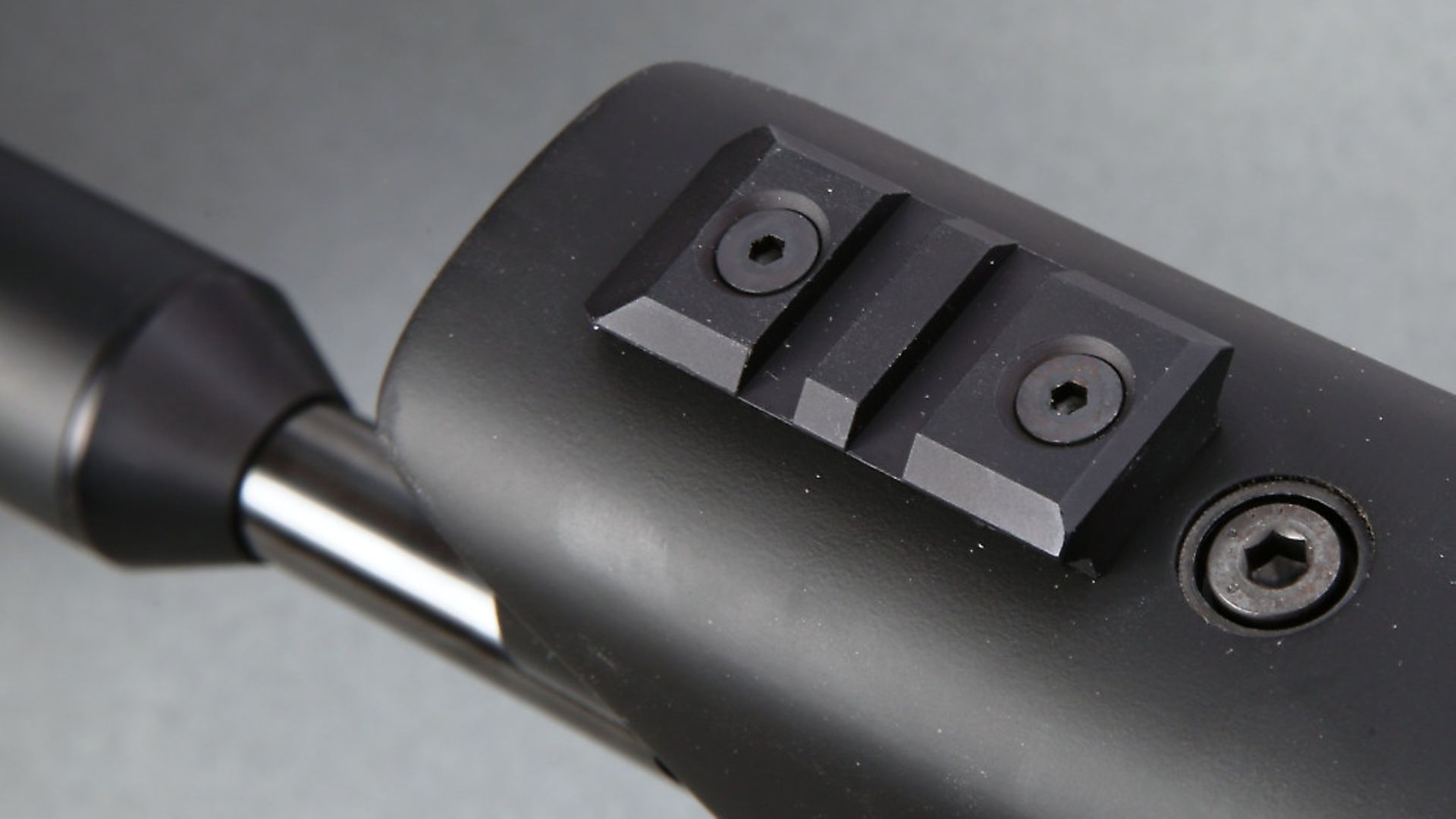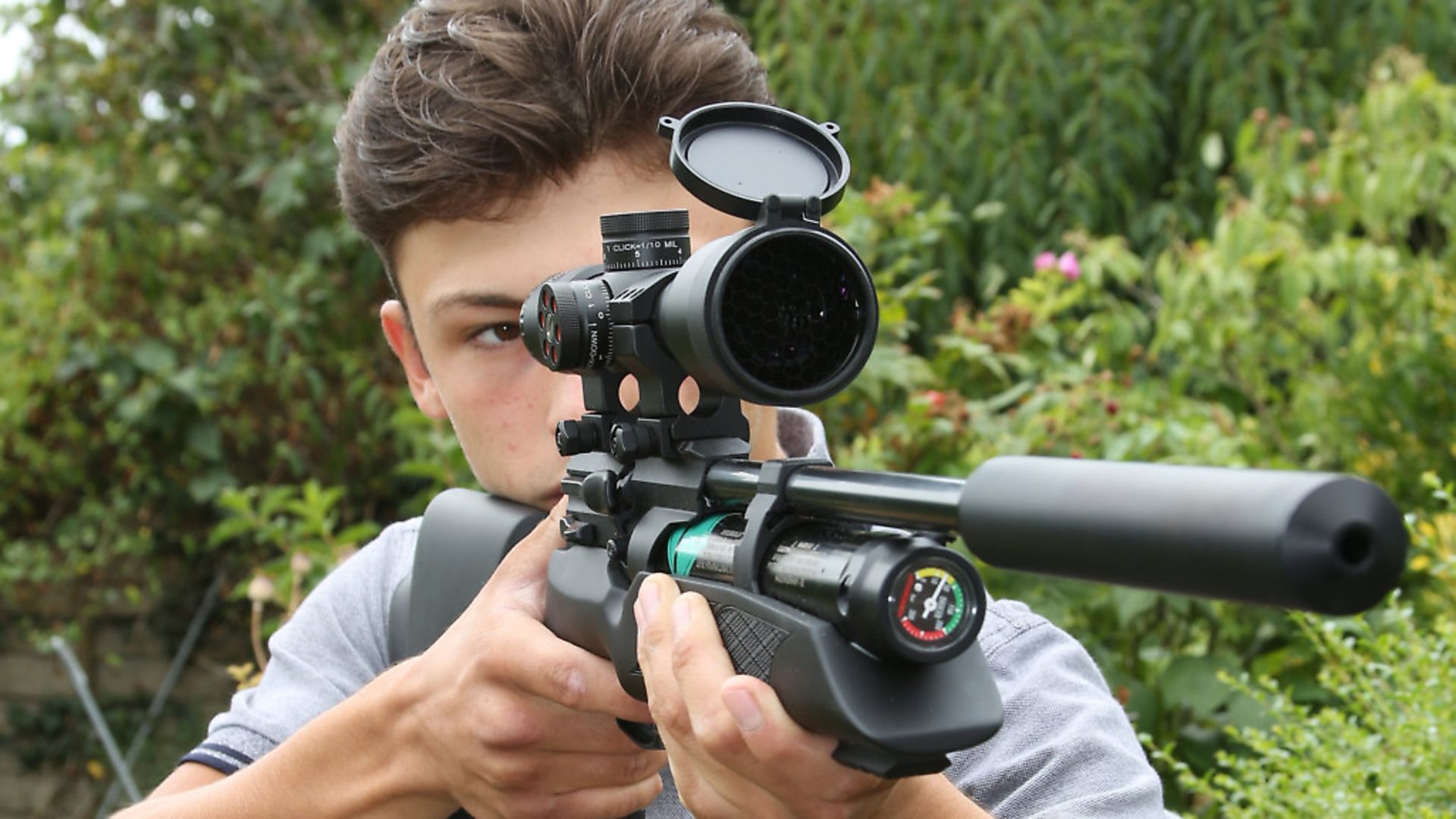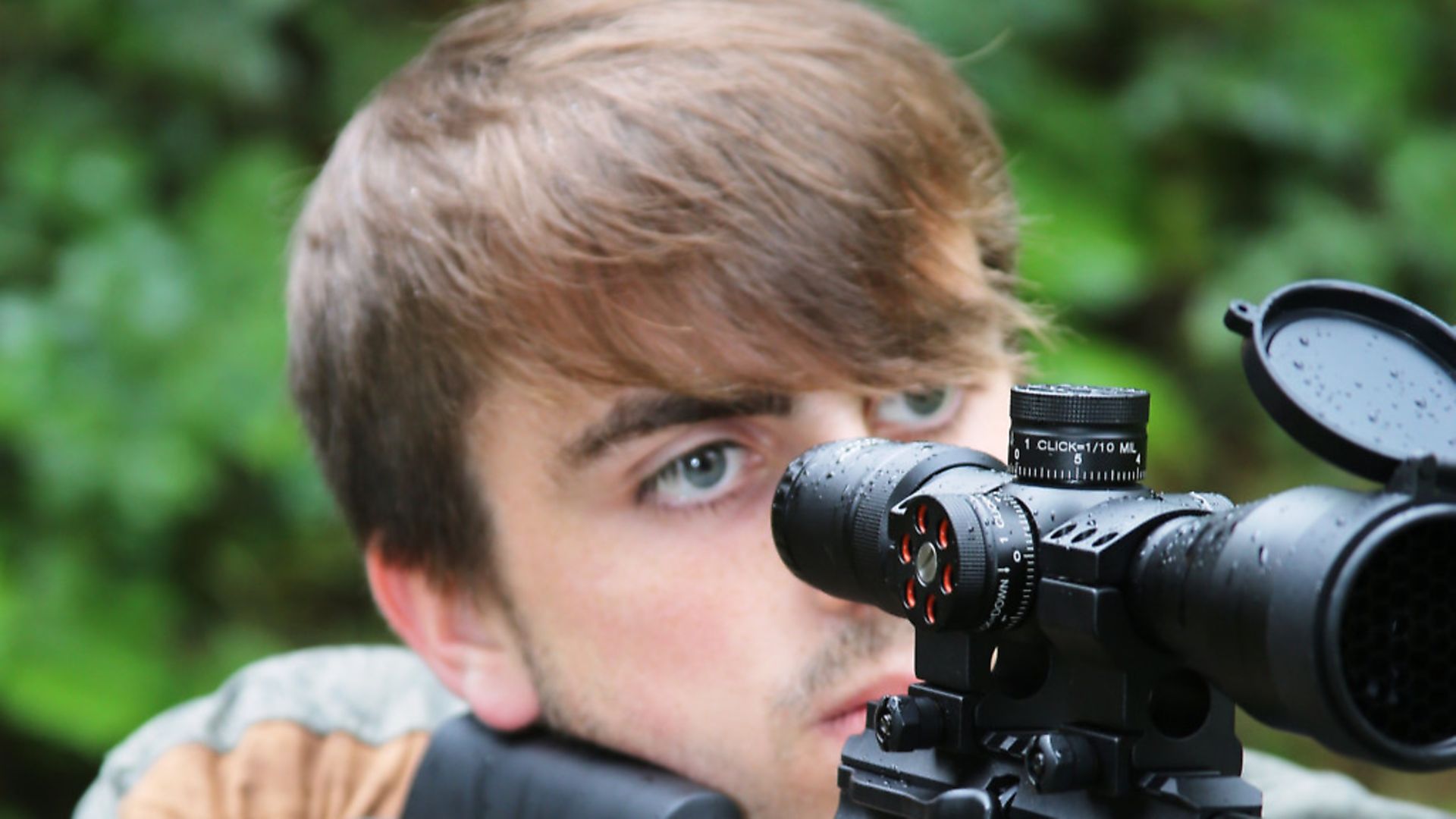Weihrauch has shortened its super-successful HW110 – let’s see how it measures up
 credit: Archant
credit: Archant
It was in March of 2016 that I first became fully acquainted with the Weihrauch HW110 pre-charged pneumatic. From the first encounter it was obvious that this ambidextrous, 10-shot rifle would, at the very least, cause a major reaction, especially among Weihrauch fans. The HW110 was like no other Weihrauch ever made, in that it had a polymer action block. An action block made, or rather moulded, from polymer instead of being milled from traditional Weihrauch metal. No wonder the HW ultra-traditionalists went into meltdown.
‘A Weihrauch with plastic parts!’ they raved, mainly on the Internet, it has to be said, a place where every new airgun is ritually slaughtered, usually by those who have never actually seen it, let alone tested one. Yet, this new HW110 definitely had questions to answer. Would that polymer block stand up to hard use? Would the Picatinny scope rail prove to be a turn-off? Had Weihrauch thrown the baby out with the bathwater by making a more affordable version of its renowned HW100, and most significant of all – was this 110 a real Weihrauch at all?
Record sales
The following months saw record sales of the HW110, as thousands of shooters put aside their preconceived notions and judged the rifle on performance. I’ve been shooting one of the first 110s off the Weihrauch production line since the launch, and it’s as consistently, clinically, reliably accurate today as it ever was. That polymer block remains rock-solid; the trigger is still sublime, and the sidelever-activated, autoload system hasn’t missed a beat. Add the £100 saving over the cheapest HW100, and I’m not remotely surprised that the 110 has sold in serious numbers. The simple fact is, the HW110 is a superior sporter. Now let’s see what lopping a lump off it has done to that amazing performance.
 credit: Archant
credit: Archant
The HW110 K
Beginning with the absolute basics, the HW110K is four inches shorter than the standard 110. The fore end of the K measures 9.5 inches and its stainless steel air reservoir is a half-inch shorter than that. The K’s barrel has been reduced from the standard 16 inches to a handy 12.2, but, as far as length goes, everything else is the same as on the HW110, including that now tried and tested polymer action block.
Other changes are more subtle, but entirely welcome, most notably the new black finish applied to the rifle’s safety catch and magazine release lever. I really didn’t like that ‘silver-alloy’ finish, because I believed it looked unfinished and therefore ‘cheapened’ what is a high-quality sporter.
Since the HW110 was launched, Weihrauch and UK agents, Hull Cartridge Company, invited input from all angles, and I guess the ‘silver components’ theme was regular enough to prompt action; rather than my own queening on about it every chance I had. Anyway, those features are now black and the rifle looks much the better for it. I hope all HW110s will be treated similarly. I’ll check with Weirhrauch and get back to you on that one.
The final change is the addition of a section of Weaver rail on the fore end underside, which again appears by popular request, although not from me this time. That little rail will no doubt be considered an excellent addition by most, but it falls right where my leading hand goes and I find it a bit annoying. It’s removable, mind, so I should probably shut up and get on with the shooting.
 credit: Archant
credit: Archant
The test format
Instead of re-testing what should be a near-identical rifle, in terms of accuracy, I’m going to concentrate on the differences the reduction in length has made, plus I’ll explore the potential applications of the HW110 K. In a further departure from the norm, this test won’t be based on what I can get out of the HW110 K, because I’ve used this rifle in its standard form for over two years and I’ve shot over 5000 pellets through one. The stats are listed in the technical specifications panel, plus I know precisely what this rifle can do and exactly what to expect from any variation of it. That said, I established the test rifle’s credentials with a series of sub-20mm diameter groups at 45 yards, to make sure it was doing what it should, and with my mind at ease, I headed for my club at Bisley.
Different shooters
It was my intention from the outset to observe the efforts and results of shooters of varying abilities, to see how they adapted to the test rifle’s features. Due to its more affordable price tag, I believe the HW110 K will be used by quite a few less-experienced airgunners, and its user-friendliness would be a major factor.
I’d arranged to meet Airgun World’s latest recruit, advertising sales chap, Connor, at the club for an induction and introduction to the joys of airgun shooting, plus the safety rules, a bit of technique training, and the associated challenges, rewards and interesting stuff that comes as standard with this glorious sport of ours. Connor is also a novice, which perfectly suited my purposes.
Lectures over, Connor was placed in the care of an experienced club member, while I flitted about with the camera and observed how a novice deals with a Weihrauch HW110 K. Oddly, Connor did what so many never do, and studied the instructions that come with the rifle. Armed with this knowledge, backed by some practical pointers, and with the rifle nicely stabilised on a Bisley bench, Connor was soon hitting the 40mm diameter, 25-yard spinners far too regularly. We ordered him to engage the 40-yard crow knockdown, then the 50-yard squirrel target, and each fell with a regularity that set Connor grinning the universal grin of the successful shooter.
 credit: Archant
credit: Archant
Novice-friendly
Watching Connor cycle the Weihrauch’s sidelever action, load those multi-shot magazines, make proper use of the precise, two-stage trigger, and extract a level of accuracy that would have pleased shooters of many years experience, made a more significant statement than he could possibly realise. Within 30 minutes, despite the tipping-down rain, Connor could run that test rifle with total confidence. It will take many more sessions before he fully understands each process, but the foundations are already established. Connor loved his introduction to airgunning, and he can’t wait to get back on the range. That speaks volumes, too.
Experienced shooter
My nephew Levi is 18 and, like me, he’s been shooting air rifles since he was big enough to carry one. He has an easy, efficient shooting style, he knows what he’s doing with a rifle, and he gets to shoot many of the rifles I’m testing. He was the ideal candidate for the ‘experienced shooter’ role in this test.
I asked Levi what he thought about the HW110 K, and he immediately told me what I knew already, when he said, ‘that would be perfect for shooting from a hide, or inside a barn, or from a 4 x 4.’ Then I told him to put some shots downrange, and he cycled his way through the first magazine from the kneeling position, and the second from a standing stance. ‘That’s a stable rifle for something that light, isn’t it? It’s so quiet, too. Is it full power?’ Like far too many airgunners, Levi places too high an emphasis on ‘power’, but one day, as we all do, he’ll fully appreciate that precision placement is what hunting with an airgun is all about.
 credit: Archant
credit: Archant
Like Connor, Levi had the mag’ changes and everything else, down pat within minutes, but I knew he’d handle those requirements with no problem. He has his own PCP and shoots it extremely well, but he repeatedly praised the little Weihrauch and said more than once, ‘that would be just the job for what I do. It’s so handy, isn’t it?’ Yes it is. It’s just about as handy as a full-performance sporter could be, actually.
Initial conclusion
This ‘K’ version of the Weihrauch HW110 increases the rifle’s range of uses, without reducing its performance in any significant way. The test example produced over 60 perfect shots in .177, and a .22 will do around 80, and if for some happy reason that’s not enough, then any hunter could take a small top-up tank into the hide, truck or corner of the barn, where this foreshortened Weihrauch will undoubtedly shine. An easy air-injection via the supplied charging probe will have the 110 K shooter ready to fill another bag in seconds.
Phil Hardman will absolutely love this rifle, and I’m going to ask Hull Cartridge to get one to him for testing as soon as possible. I’d really like to see what he thinks of the new 110 K format.
There it is, then, the new Weihrauch HW110 K; it’s everything its best-selling bigger brother is, only in an even more handy package. For the HW110 format – this could be the kindest kut of all.
Specification
Model: HW110 K
Manufacturer: Weihrauch
Country of origin: Germany
Type: Pre-charged, multi-shot sporter
Calibre: .22, .177
Cocking: Sidelever
Loading: Via removable, rotary10-shot magazine
Trigger: 2-stage, ambidextrous
Stock type: Ambidextrous, soft touch hardwood
Weight: 3.6kg (7lbs 9oz), scoped as shown
Length: 876mm (34.5ins)
Barrel: 310mm (12.2ins)
Fill pressure: 200 bar
Shots per charge: 60-plus in .177, 70-plus in .22
Variation over 50 shots: 12 fps for .177 on test
Average energy: 11.3 ft.lbs.
Contact: Hull Cartridge on 01482 342 571
RRP: £684
__________________________________________________
See more gun tests...
Weihrauch HW75
Long-range shooting with the Weihrauch HW44
Weihrauch HW98